Video from Cabo Polonio, Uruguay. Thought of the song immediately after crossing paths with the little critter (I, for one, embrace my apparent lack of originality) and its earworminess has been coming and going at random three weeks now.
Relevantly Irrelevant
Video from Cabo Polonio, Uruguay. Thought of the song immediately after crossing paths with the little critter (I, for one, embrace my apparent lack of originality) and its earworminess has been coming and going at random three weeks now.

Article originally posted in the Rights4Water Website.
Uruguay is the second smallest country in South America (after Suriname), with an area of 176,215km2, making it about 15% smaller than Belarus and 35% larger than Greece. A total of 3,324,460 people call it home and about 1,947,604 (or roughly 57% of the population) reside in the Montevideo metro area on the Río de la Plata. In fact, its urbanization rate is over 95%, one of the highest in the world. Meanwhile (and perhaps contradictory to the previous statistic), close to 93% of its territory is apt for agriculture or pasture, and with existing cattle numbers surpassing 12.000.000 in 2014, Uruguay is world champion of cattle per capita. To reiterate: for each Uruguayan that lives in an urban centre, there are 3.6 bovines living in its vast fields.
The fertility of Uruguayan soils would likely not be possible without its vast river network, which is mainly defined by Río Uruguay and important tributaries in its basin, such as Río Cuareim and Río Negro; Río de la Plata and its tributaries (including Río Santa Lucía, which provides water for Montevideo) and others. OSE is the country’s main public water company, while DINAGUA (the National Water Directorate), along with MVOTMA (the Ministry of Housing, Land Management and the Environment) and a number of other government directorates are responsible for managing Uruguayan water resources.
Major basins of Uruguay
Privatization of management, with some exceptions, has been largely avoided due to the 2004 plebiscite promoted by the National Commission in Defence of Water and Life. The plebiscite, ratified by 64,58% of voters, resulted in a constitutional reform and the inclusion therein of the now famous Article 47. With it, the Uruguayan constitution was the first in the world to give the state sole authority over water management, making privatisation unconstitutional, explicitly stating that “users and civil society are to participate in all planning, management and control of water resources”. In addition, it declared water “a natural resource essential for life” and made access to water and sanitation “a fundamental human right”.
More than a decade later, management of water in Uruguay is now organised by river basins and hydrographic regions: they are the basis for the regional and basin councils regularly called by DINAGUA. These councils, which are meant to be tripartite, allow the participation of delegates from the government, the users (agriculture, pastures etc) and civil society, and are convened to discuss matters of water quality, regional development plans, emergency situations such as droughts, good practices etc. The inclusion of the citizenry in the management of water resources, as mentioned above, became a constitutional right as a direct result of the referendum. However, until now, these councils have been the only formal way of allowing the citizens to have any say in water management and control.

Regional council in Las Cañas, Río Negro
There have been more problems with the actual implementation of Article 47. Apparently, compartmentalisation of power over water resources has become a problem of management: “The water law (predicated by the constitutional reform) is based on management by basin; the territorial legislation law is based on management by political boundaries, by regional department”, says Carmen Sosa, current member of CNDAV and representative of the worker union of OSE in her interview to Rights4Water. “Since authorities for each river basin are so compartmentalised, we need to examine the difficulty of managing water in such a way. It was our inspiration to have a single organisation, a ministry of water, a ministry of the environment, which would bring all the powers together in a single place. For when authorities are so dispersed, when the responsibilities are so dispersed, in the end nobody’s responsible. Management is very complicated when there are ten different organisations in charge—and all with the same level of responsibility.”

According to Mrs. Sosa, the state could make popular participation more viable by making the regional councils and the information discussed therein more accessible to the citizens. “Oftentimes the only thing people know about is the problems that they have: how their neighbour’s well dried up, or how their own water is polluted. But they do not have any information on the context and on what state the country is in for such things to happen.” Most of the councils are presently working with the most serious water-related problem the country’s facing right now: the contamination of the basins by run-off from its soy plantations and its pastures. We shall go more in-depth about this in our next article on water as a human right in Uruguay.

10 μήνες μετά αυτό το επεισόδιο! Τουλάχιστον δεν κλείσαμε χρόνο. Το γράφημα ημερομηνία λήψης/ημερομηνία δημοσίευσης ξαναπήρε την κατιούσα (αυτό είναι καλό, κι ας ακούγεται το «κατιούσα»–katyusha?–σαν κάτι το κακό)!
Σε αυτό το επεισόδιο που ηχογραφήσαμε σε ένα μπαράκι του Βελιγραδίου με τη Δάφνη, συζητήσαμε και αναρωτηθήκαμε:
..και πολλά άλλα, στο πιο πολιτικό επεισόδιο μέχρι τώρα. Απολαύστε! Ο τίτλος σημαίνει «Βαλκανικά αδέρφια», btw. Α, και η λέξη που δεν θυμόμουν: legacy στα ελληνικά: υστεροφημία, θα μπορούσε να είναι μία μετάφραση.
Για περισσότερα, ρίξτε μια ματιά και στο ποστ που έγραψα αφού γυρίσαμε από το ταξίδι μας, Balkan Flexpress.
Και κάτι σχετικά με το μετρό της Αθήνας που αναφέρουμε στο podcast: η Αττικό Μετρό είναι ιδιωτική εταιρία αλλά ήταν απ’ότι φαίνεται μόνο η εταιρία κατασκευής, δεν το διαχειρίζεται αυτή τώρα. Το ερώτημα πάντως παραμένει: θα έπαιρνε λεφτά από την ΕΕ για την κατασκευή της γραμμής 4;
My first sample of work from Montevideo. I’ve been here three weeks already and all I have to show is this, but the Uruguay team is not really a team, it’s just me.
In fact, I wrote the questions, shot, cut, transcribed, translated and subtitled this all by myself (with the help of Roberto who asked the questions is arranging most of the interviews, so THANK YOU ROBERTO!), so I kinda feel proud about it, as a token of “I can do all these things!”
My rating: 4 of 5 stars
Huff. It’s been almost 8 months since I read Into the Wild and I still haven’t reviewed it. OK. Let me look at the little notes I took while reading it so I could remember the points I wanted to make about it before giving it back to its rightful owner, the Dutch girl Rian who, before lending it to me, told me that it’s in her top five books.
Hey, why not copy the notes here?
*He’s received unwarranted flak. Like Thoreau, criticism against him is really against an idea he never supported explicitly.
*Krakauer fantastic reporter/researcher. Weaves everything together, including personal and parallel/related stories, convincingly.
*Started reading at 17:30. Read the whole book in more or less 6 hours in almost a single sitting.
*Quotes at beginning of each chapter great addition—include McCandless’s own notes and favourite quotes.
*What if Krakauer had died in his own mountain climbing story he retells in the book? Would we have ever heard about Alex Supertramp?
*Similarly, if Christopher McCandless hadn’t died, then his story wouldn’t have become known. There are countless others who live the life he wanted to (and for a time, did) live, but they are virtually unknown to all but few.
*Arrogance? Indignation of his father? What exactly was the final straw that pushed him into the wild?
Then there’s Daphne’s notes who also read the book before I gave it back to Rian. She can take care of those, if she wishes.
What I can say is that McCandless is a very controversial figure. You either love him or hate him, and I’ve noticed that people’s opinion on him have very different sources. Some admire him for his courage to abandon his reality and/or prospects of what most would consider a successful and happy life, in order to venture out and into the “real” life. Others believe that his greatest achievement was to live as long as he did the way he did, that he was a free spirit, an example for all.
Then there’s those who say that Alex Supertramp’s story was just a glorified suicide, that a great part of his story has been misrepresented, especially through the movie. They dislike him for his unwarranted fame and his selfishness for abandoning his family and good fortune.
What I can say is that I’m torn. I wouldn’t call his story a glorified suicide. Perhaps it was until or after some point, but right before the end it seems that he’d learned his lesson, the famous “Happiness only real when shared”. It’s interesting that he ultimately didn’t care whether he’d die or not having chosen to live the way he did, but for crying out loud, he was practically next to civilization when he chose to live in that school bus! Some preparation could have saved him his life… if he wanted to survive, that is. Again, perhaps it had started out as a suicide before Supertramp realised what he’d got himself into and what he had really left behind.
My biggest takeaway from the book isn’t the story of the human thirst for freedom and adventure, nor the idea that “the system can be hacked, what are you waiting for?!”. It’s the notion that people naturally glorify death and dying for one’s alleged cause. That makes all the difference.
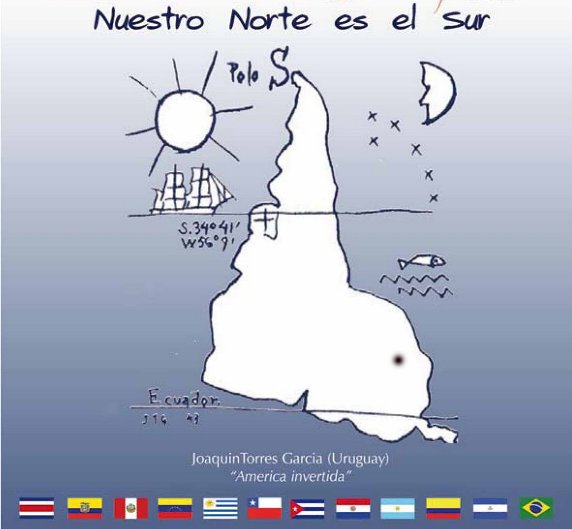
It was my first time to cross the Atlantic, indeed the farthest I’d been from home since my last time in Australia in 2002.
What took me to the second-smallest country in South America was yet another you-only-pay-30%-of-travel-costs European youth project. This one’s called Grassroots Youth Democracy. In it, youth from Greece, Italy, Ecuador, Uruguay, India and Mauritius will participate in joint research on the water context of each participating country, which in turn will culminate in a media product and relevant campaign to raise awareness on the issue of water as a basic human right and common good.
Grassroots Youth Democracy is separated in phases and will take most of our time for the rest of 2015. Phase 1, which was the purpose of the trip I just came back from, was a week-long seminar on water rights in general. Participants had the chance to make presentations of what the water context in their specific countries is, and we also made a first draft of the plan we’re going to use for organising this international campaign between ourselves: who’s gonna do what, what our research methodology will be, what we’re going to with the data etc. After all, co-ordinating a local team can be hard; one strewn across four different continents? Yeah.
Phase 2 will take place in May in Rome and will consist of a media seminar: teaching the participants how to use a camera, do interviews, edit videos, update a website and such things I have the skills to help with. Thank you, University of the Aegean!
Phase 3, which will start right after Rome and last until mid-July, will have the participants from the extra-EU countries come to Greece or Italy and do a field research on the water situation in the respective country, that is collect data for articles, videos and other material to be used in the campaign. There will be interviews with NGOs, analysing stats and delving into the unique water-specific problems of that country. In Greece, for example, the participants will look into what happened with EYATH and its privatisation and how it was avoided by the resistance of the civil society through the 2014 unofficial referendum. They will also research the problem of the lack of drinking water in some Greek islands, such as Aegina, and the sometimes even more problematic solutions corrupted authorities have come up with to alleviate the situation. These are just some examples.
Phase 4 will start right after Phase 3 and last until September. Basically it will be like Phase 3, only the other way around: the Italians and the Greeks, of which there’s four of each, will do the same kind of field research in pairs in Uruguay, Ecuador, Mauritius and India. This is when I’m going back to Uruguay for two months, during the southern heart of winter! No Greek summer for me this year.
After all the above, we’ll collect all the data we’ll have got and make something out of it: a small book, an online database, a documentary, a social media assault… a little bit of everything. This will be our awareness campaign (and I hope it will end up a little bit more exciting than I’m afraid I’m making it sound here.) There will be a final conference/presentation of results but not a lot is known about it yet.
To be perfectly honest, Phase 1 in Montevideo, the one that just finished, needed more outdoors activities. The presentations and material discussed on water issues were interesting and our team-building was successful, but after a certain point I found it hard to concentrate on Powerpoint after Powerpoint and group brain-storming activity after group brain-storming activity. Being in the same room for hours on end with little chance of going out in the warm Autumn sun apart from during the short coffee breaks and the lunch (which was admittedly DELICIOUS and very vegetarian-friendly—THANK YOU CRAZY MARIO, cook of La Fonda!) made it much worse. During the first few days we saw practically zero of the city and at the end of each session I felt much more exhausted than I believe I should have.
No matter. In the end it was a valuable getting-to-know-you with the team and we did some important work. We will just have to work hard from here on out.
…what? You want to read about Montevideo and Uruguay, NOT the seminar? What are you, crazy?!
OK, get this: Uruguay is an extremely interesting country, given its small size and low importance on the grand scale of things. Sorry, let me rephrase that, because everything that’s ever taken place on this planet is of extremely low importance on the grand scale of things—low importance as far as human societies go; countries, politics… you know, that sort of thing. I mean, what do you know about Uruguay?
What I knew was that the country’s (now ex-) president donated 90% of his salary to charity and generally lived super simply, and that recently they legalised marijuana. That’s pretty much everything /r/worldnews would let through the filter. Ahem…
Let me tell you: both of these things are true.
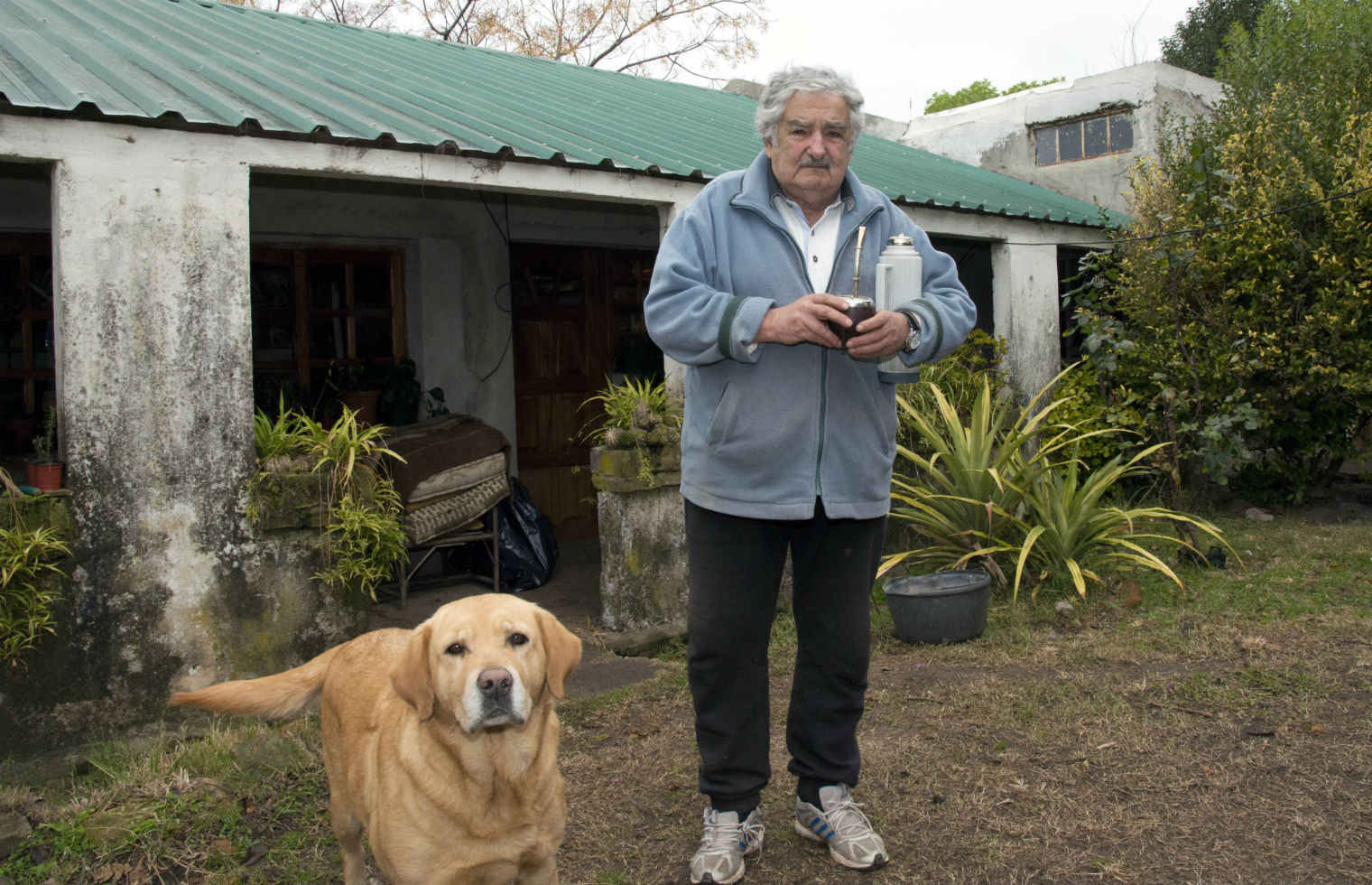
José “Pepe” Mujica is seen as a bit of a populist in Uruguay itself, but here are eight reasons why he should be missed by the rest of us, according to The Independent:
1. He donated 90% of his salary to charity.
2. And lived on a farm.
3. He drives a 1987 VW Beetle.
4. And picks up hitch-hikers.
5. He legalised marijuana.
6. He leaves the economy in rude health.
7. He’s just not like other politicians
8. And all that after being shot six times and being put in jail for 14 years for opposing the country’s former dictatorship.
Have a look at the article for a few more details, it’s worth it. What are the chances a guy like this could ever be the leader of your country?

Now, that other thing. “You know that in Uruguay marijuana was recently legalised, don’t you?”, said one of the Uruguayan participants to me before I could even ask her anything about it. “Everybody does it here. Even ten years ago people in suits would light one up after work. The thing is, you can’t go somewhere to buy it. Not like that. You have to be a resident and a member of a marijuana club if you want to purchase it. But many people have a little plant or two at home and will soon offer you some!”
I suppose the above is true for young people, but who knows? It didn’t seem to me that marijuana use was 100% socially accepted in Uruguay, there must be some controversy remaining, but it looked close to it. I say they have the right idea. There really is zero reason marijuana should be as illegal as it is in such big part of the world. Zero. Addiction-related issues, whenever they arise, should be treated medically and psychologically, similar to the way alcoholism is treated, not be a matter of concern for law enforcement. This system has already been adopted in a lot of countries. Have a look at this map caught from the wikipedia article on the legality of cannabis around the world:
What does this flag remind you of? They have the same number of stripes, too. Want another fun fact that goes with the similarity between the flags? Both Uruguay and Greece were de facto created in 1828. But, as I learned recently, the Greek flag as we know it now was standardised during the military dictatorship. Before that it used to be simply this:
This was the state flag and the one we use now was the merchant and national flag, before the former was abolished completely.
Back to the other country with blue and white stripes on its flag.
Uruguay’s name comes from the river forming the natural border between it and Argentina. It is the indigenous Guaraní language for “the river where the painted birds live.” Beautiful image, isn’t it? It flows out into the that bay to the left of the map, the famous Río de la Plata — the river plate. It’s a hallmark and a point of reference for both Argentina and Uruguay. Some consider this formation more of a river delta than a bay, but really it’s somewhere in between: in Montevideo and even as far out as Punta del Este, the water is much less salty than normal. There’s no clear point where the río ends and the sea starts. Truly a unique formation.
Next: a brief overview of the country in video form. This video was funded by the Uruguayan Ministry of Tourism. I’m serious.
Uruguay es el mejor país: Uruguay is the best country. A semiotically complete touristic message if I ever saw one. We should try something like that back home.
In fact, there’s plenty of other policy “novelties” this country has going for it we should be trying out in Greece. Barring the relatively high cost of living, the not-too-great wages and the kind of plain landscapes (heh), in a few ways it really is one of the best countries out there. For a start, they have managed to stave off privatisation of their public sector almost completely, only selling off their mobile phone operators. Water itself has become a constitutionally-reserved state-managed human right since a relevant referendum was conducted in 2004. That’s impressive no matter what way you look at it. In addition, same-sex marriage has been legal for two years.
All the above together puts most of the “progressive world” to shame, let alone our backwards little country called Greece. Then again, Uruguay is a secular society, in stark contrast to our country where the embarrassingly rich church is still constitutionally connected to the state, which, just to remind you, means that Orthodox Christianity is taught at schools, priests are paid with our hard-earned IMF and European loan money (and pay no tax in return) and the country is still, for all intents and purposes, exclusively Orthodox. I won’t get started with nationalism and Greek superiority/inferiority complexes…
Tell me, how many people would you imagine enjoy the benefits of living in this little country? It’s whole population is barely that of Athens at ~3.5 million people, with roughly half of that concentrated in Montevideo. This bit surprised me, because I’ve always thought of South America as the land of mega cities. To illustrate, nearby Buenos Aires has a metro population of almost 4 times that of Uruguay as a whole, and Sao Paulo, which isn’t such a long way away either, is close to 6 times that.
For its modest count of human residents, this small country is the holder of a different record: it has the most cattle-per-capita ratio in the world: there are roughly 3.59 Uruguayan cows for each Uruguayan person. Impressive as that may be, note that this number still collectively accounts for just ~1% of global bovine populations.
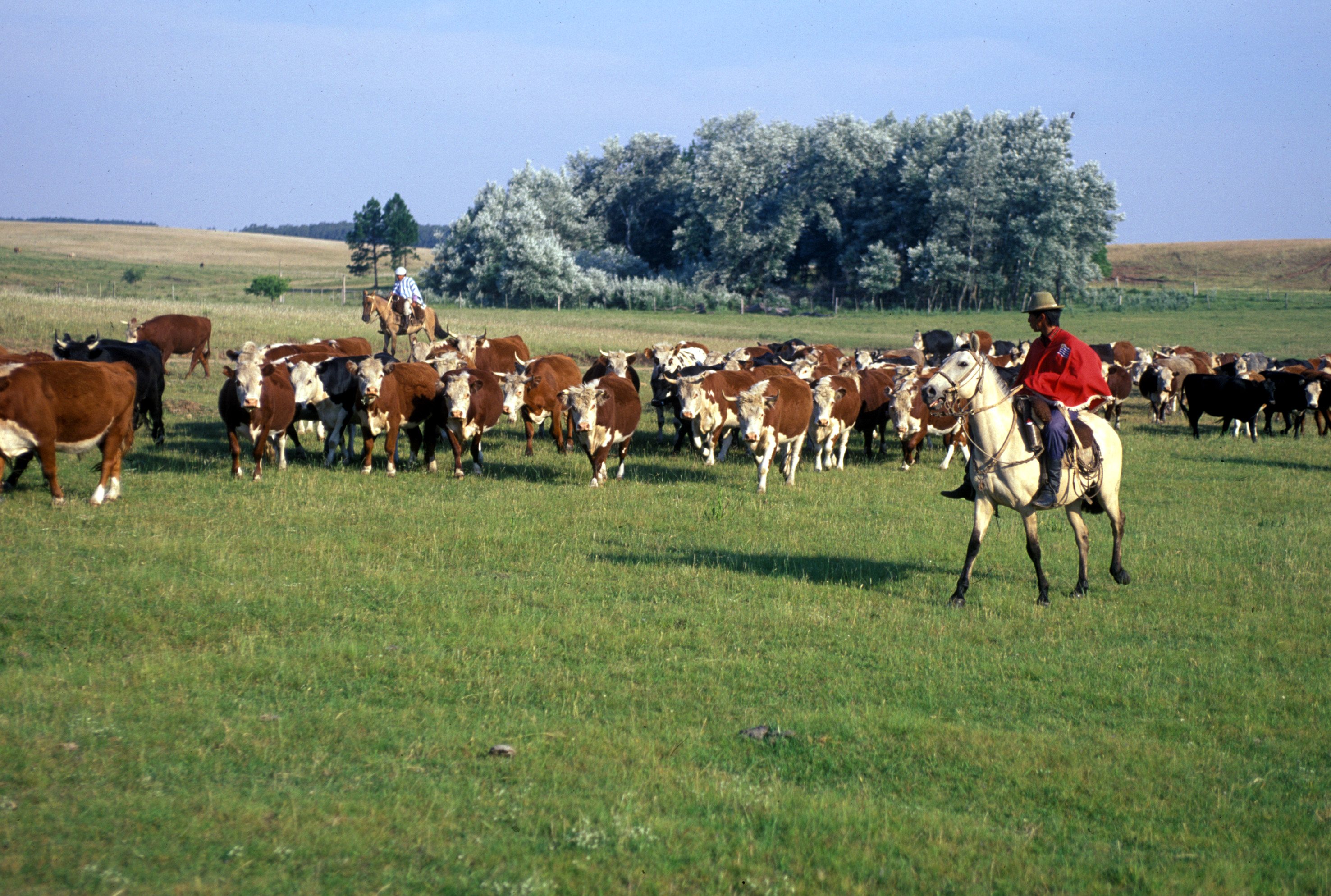
With so much mooing going on, you’d think the guys would have some decent yogurt. Nope… Even the “integral” yogurt, the one most similar to consistency to the ones we enjoy in Greece, contained sugar. This reminded me of Bulgaria, which most Bulgarians claim to have fantastic yogurt—supposedly very successful and sought after in South Korea. Needless to say, this legendary Bulgarian dairy product is nowhere to be found, or perhaps I tried it and just couldn’t tell the difference. What can I say, years of straggisto are bound to leave a mark.
Not all Uruguayan products are shoddy, though. Far from it. Mate (pronounced máte) is for Uruguayans what frappé is for Greeks, or, according to some Greeks, what it used to be, as freddo espressos have become more popular. Mate is an invigorating hot drink, like coffee or tea, ideally shared among a circle of friends. People drink it in wooden cups that slightly look like coconut shells but are made of gourd (or calabash). In it they drink the mate herb tea, which they infuse with hot water poured from a thermos and refill many times. It is drunk with a metal straw-like instrument called a bombilla (pronounced bombisha in Rioplatense Spanish). In the video below you can see an English speaker preparing mate.
I think I’ve written enough for now. I congratulate you if you made it this far! Here are some pictures for your viewing pleasure, half of which are taken by me and the others by Martina.
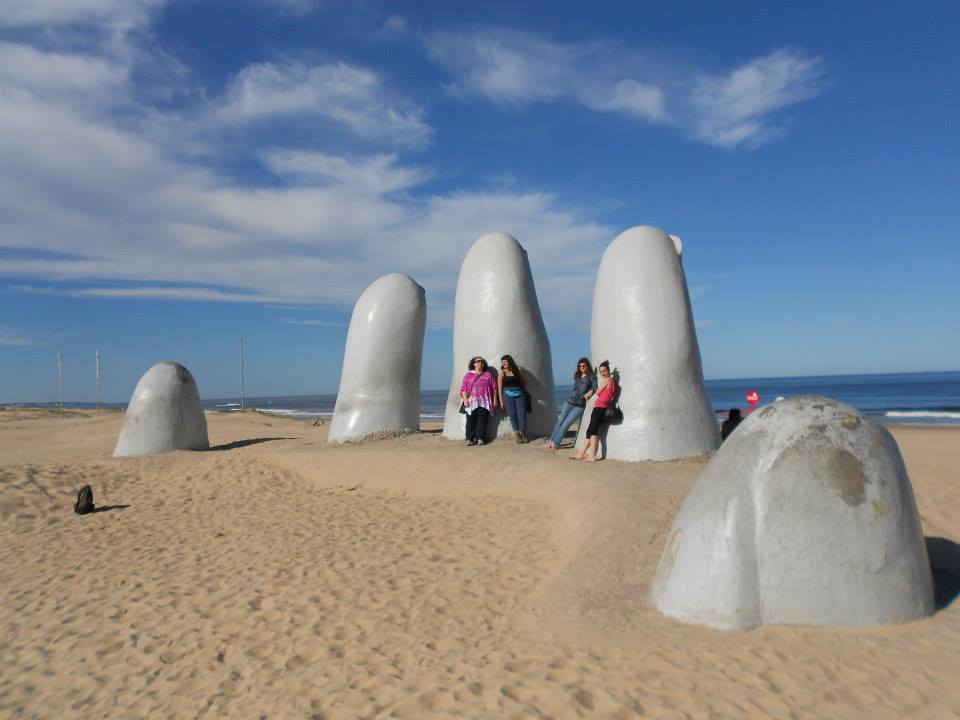
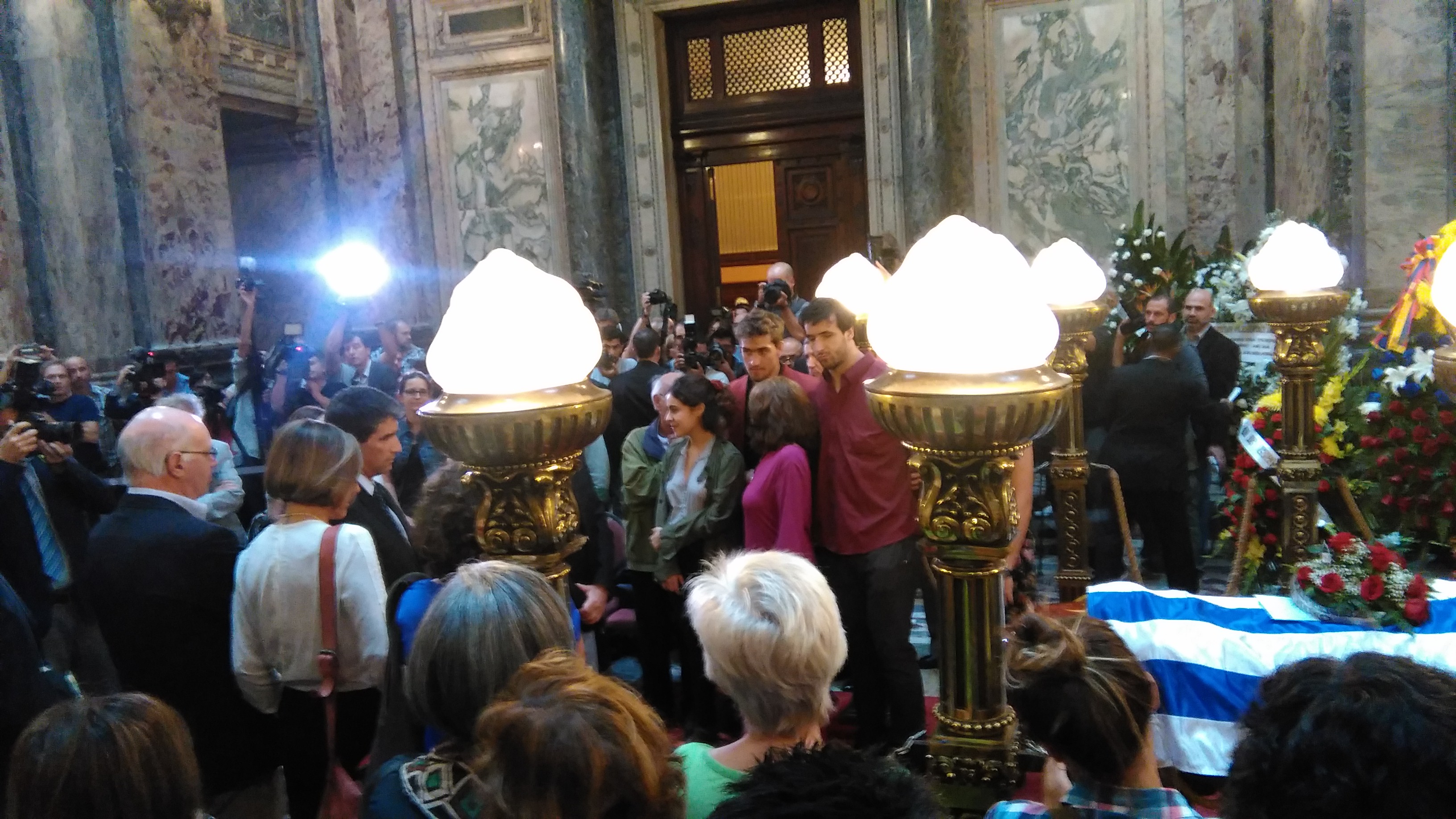

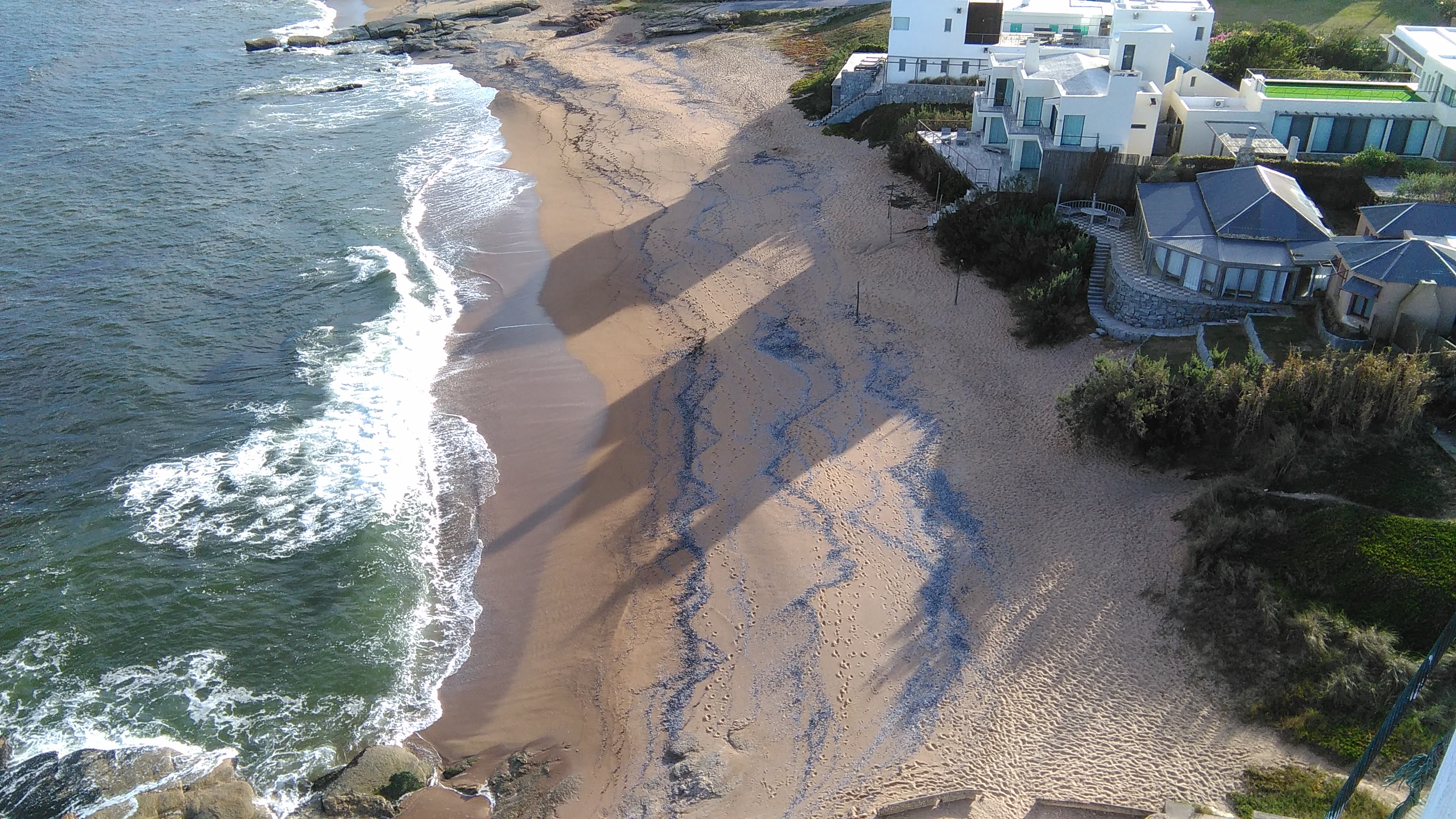

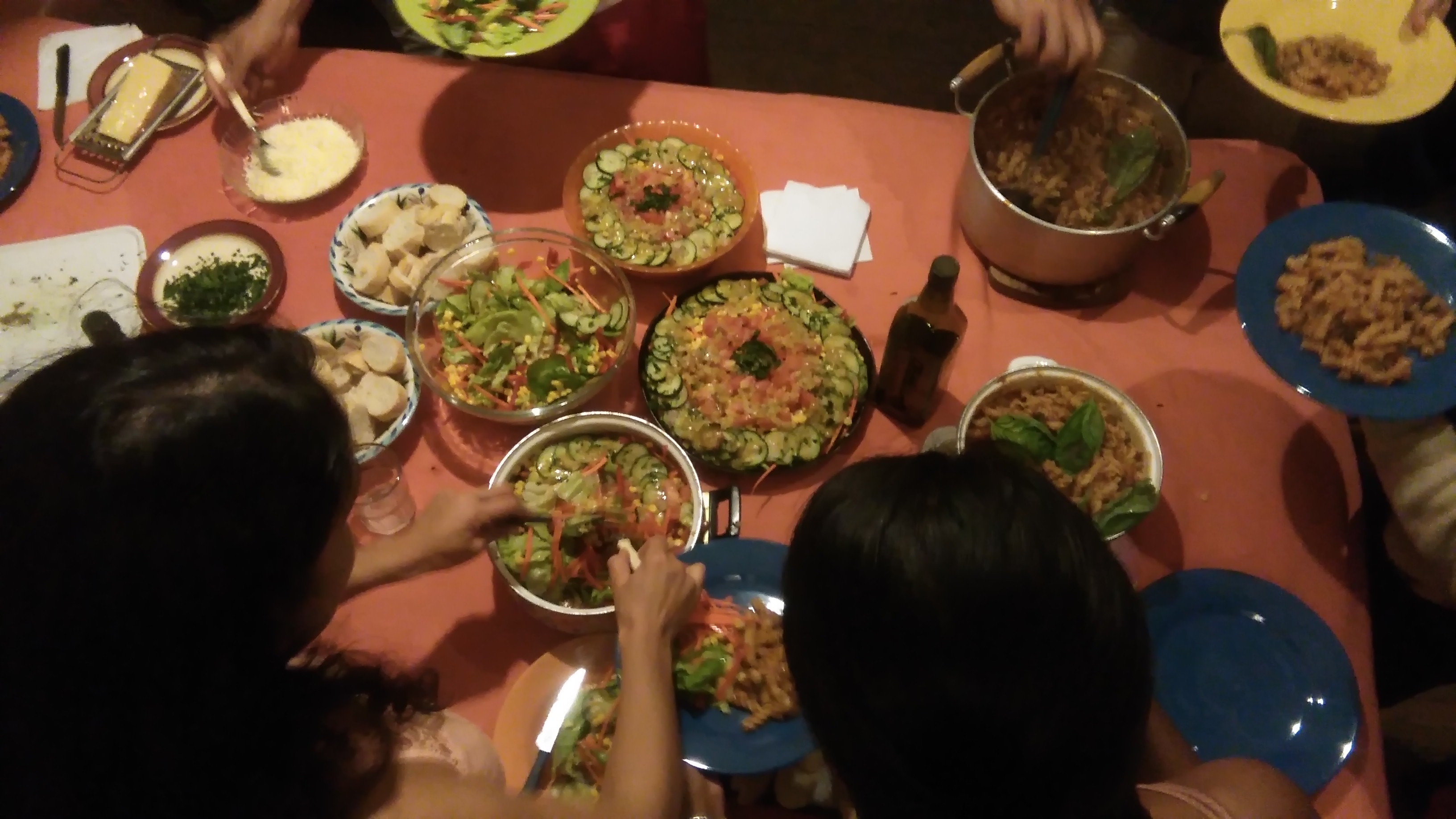
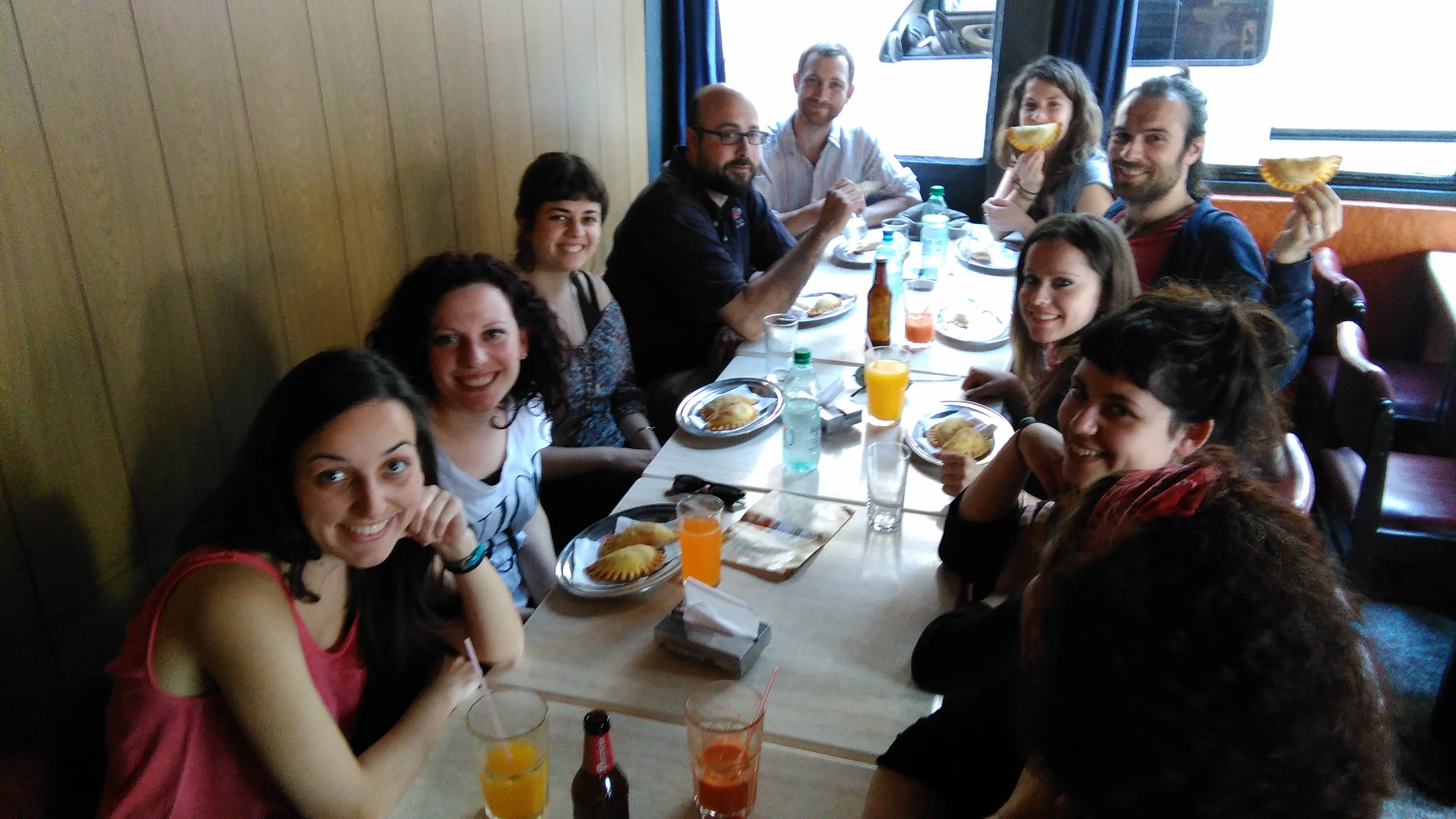
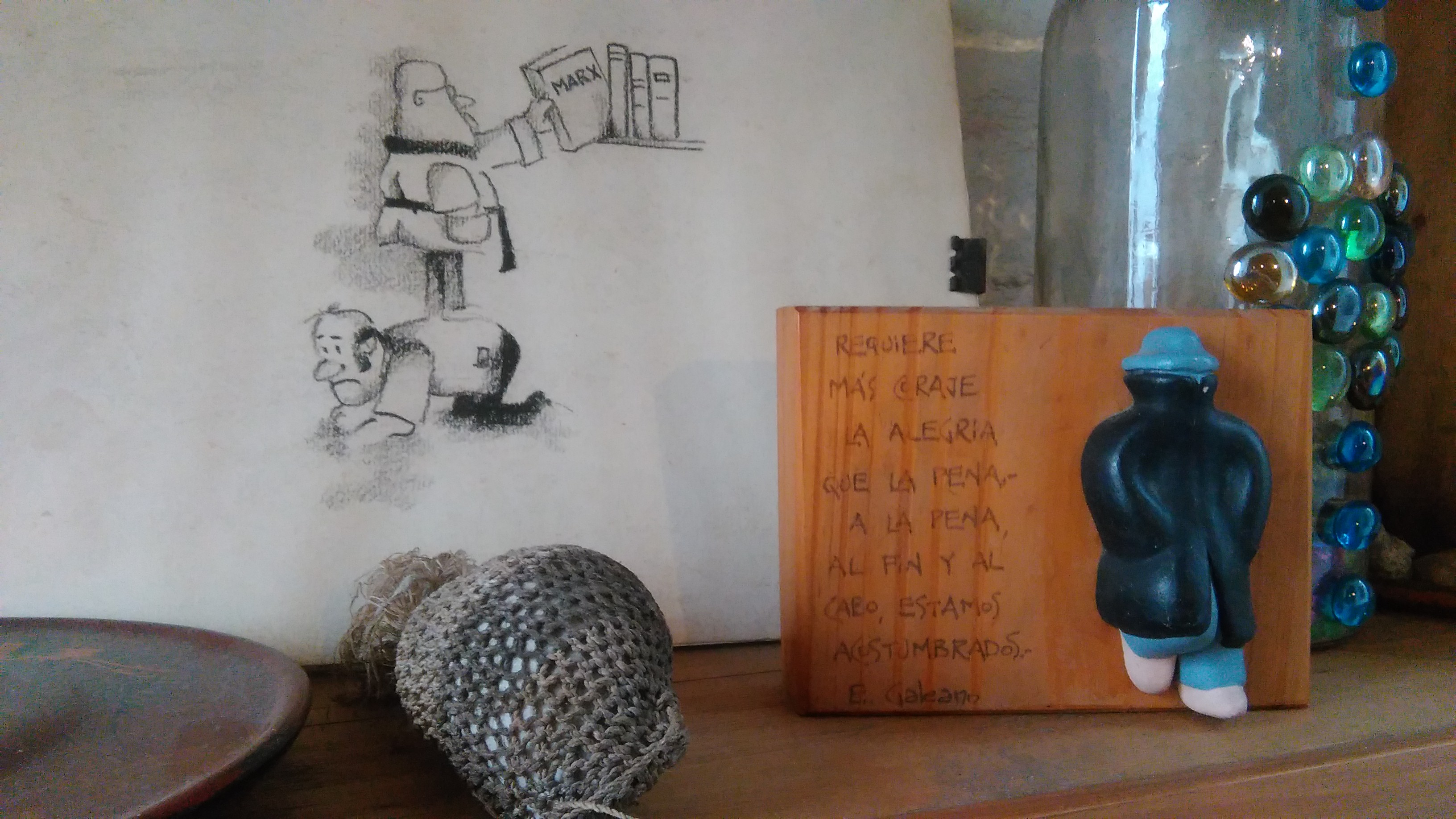
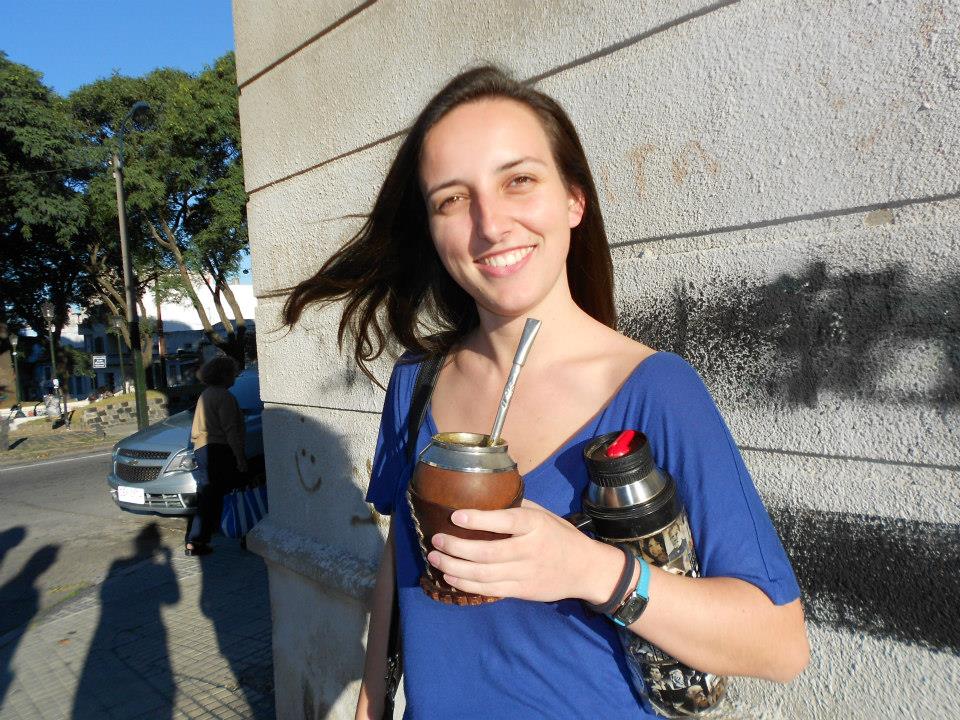
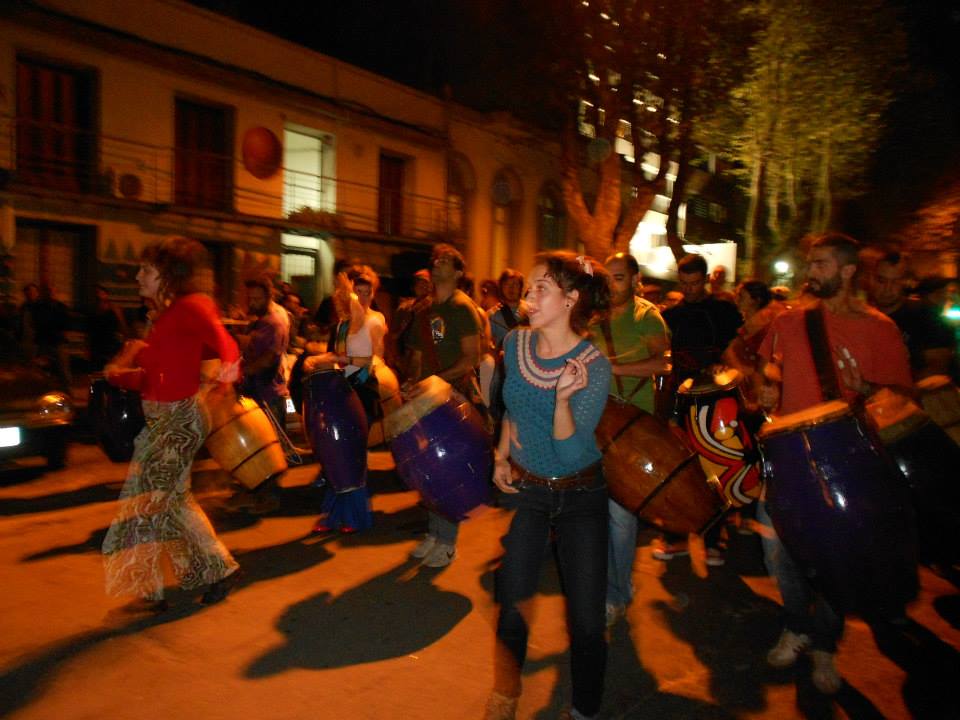
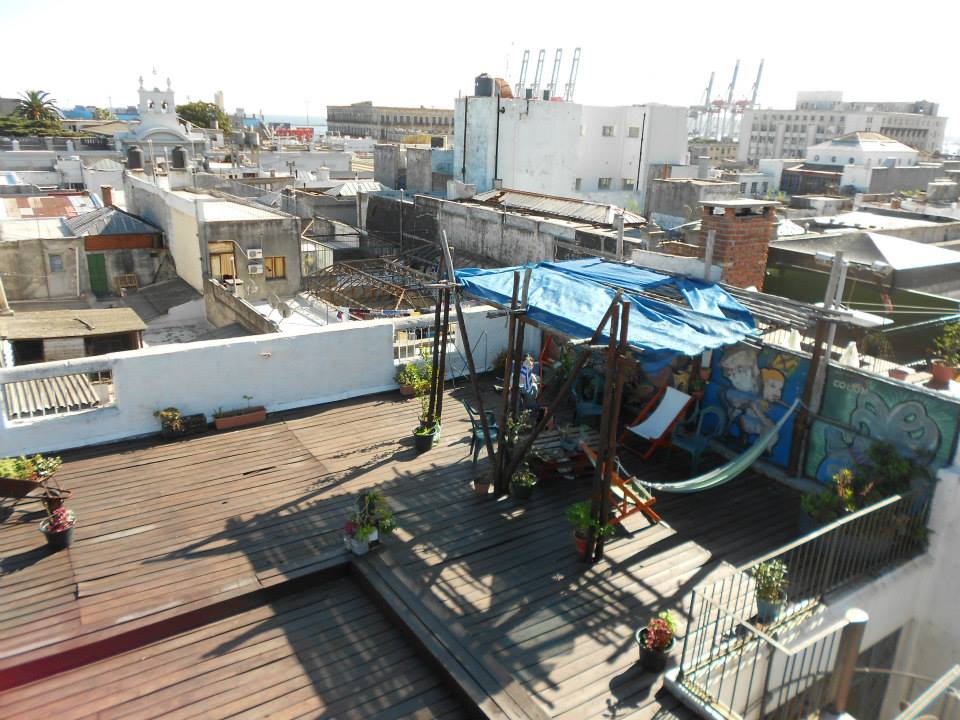
For dessert:
There is a Milonga at the centre of Montevideo, a public place where people of all ages meet a few times per week to dance and learn Tango.
The song below can be heard most evening at the Milonga and, as I was told, features in the playlists of most tango meetings. It’s called the “Greek tango.” I’m sure you know it.